68 F. high temperature in the Twin Cities Saturday.
56 F. average high on April 11.
63 F. high on April 11, 2014.
April 11, 1929: Downpour in Lynd, Minnesota (near Marshall) dumps 5.27 inches of rain in 24 hours.

An Unholy Weather Lotto
Fairdale, Illinois. Joplin, Missouri. Tuscaloosa, Alabama. Moore, Oklahoma. For that matter Comfrey and Fridley. Why do some towns get hit while the rest of us look on in awe and horror?
Like watching a soap opera or bad reality TV show we cringe and give thanks for our good fortune.
“It could be so much worse.”
All you can do is lower your risk. Safety drills. Numerous sources of severe warnings (NOAA Weather Radio & apps). Situational awareness, knowing where the nearest shelter is, preferably below ground. Having the good sense to know when to put down the camera and run for cover.
At yesterday’s Minnesota Severe Storm Conference speakers discussed the impact of a changing climate. Tornado season now comes earlier in the year. Non-tornadic severe wind events may increase and the recipe for tornadoes (instability and wind shear) may become slightly more favorable in the years ahead, but the jury is still out.
I don’t expect anything severe today, just rain and growls of thunder by evening. That’s it for rain this week; a streak of 60s into next weekend as lawns glow neon-green.
It’s that dazzling shade of lemon-lime. The color of renewal, rebirth and a fresh start.
Photo credit above: “In an aerial photo, rubble from damaged homes remains, on Friday, April 10, 2015, caused by a tornado the night before, in Fairdale, Ill. Damage survey teams were working Friday to officially determine the strength of the tornado system and extent of the damage.” (AP Photo/Chicago Tribune, Armando L. Sanchez)
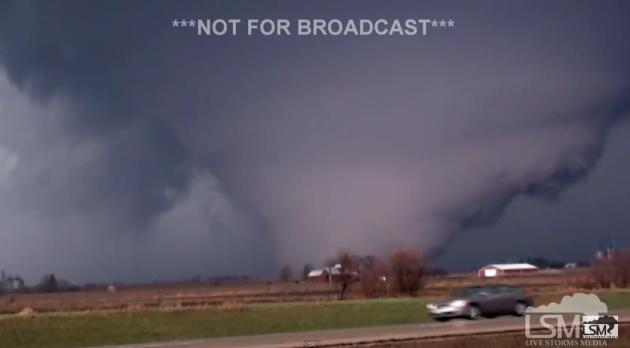
Illinois Wedge Tornado. Check out this amazing YouTube clip, courtesy of Live Storms Media: “Drill bit tornado developed west of I-39 and widened as it moved toward the highway. The tornado entered it’s wedge stage while crossing the highway and doing significant damage. The tornado then moved away toward the Fairdale community where at least one fatality has taken place and destruction took place. This large tornado churned across a long track and the National Weather Service will survey the damage starting tomorrow. Footage shot by Tyler Olson of Live Storms Media.”
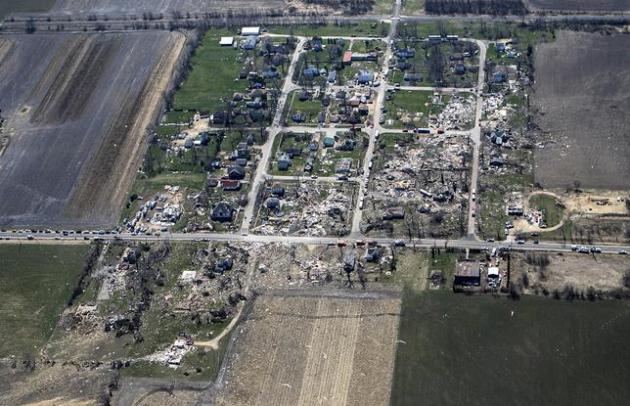
Illinois Death Toll Rises As Crews Search Rubble. CBS News has more details on the severe tornadoes that touched down about 1 hour west of Chicago Thursday evening; here’s an excerpt: “…Resident Al Zammuto, a 60-year-old machinist, said he and other residents received cellphone alerts at 6:45 p.m., but he dismissed it as previous warnings hadn’t amounted to anything. Then his windows exploded. He took cover as the severe weather struck. Bricks were torn off the side of his home. Minutes later he stepped outside and couldn’t believe his eyes. He said the town looked trashed “looked like a landfill” and the sounds were haunting. “People were screaming and yelling,” he said. “People were in total shock…”
Photo credit above: “This aerial photo shows a path of destruction Friday, April 10, 2015, after a tornado swept through the small town of Fairdale, Ill., in DeKalb County Thursday night. The National Weather Service says at least two tornadoes churned through six north-central Illinois counties. Illinois Gov. Bruce Rauner declared DeKalb and Ogle counties affected by the severe storms and tornadoes as disaster areas.” (AP Photo/Daily Chronicle, Danielle Guerra).
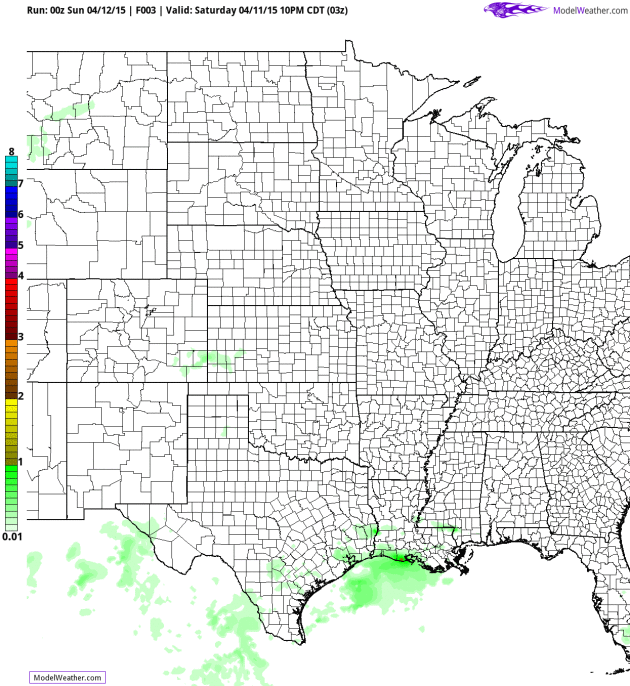
Just Enough Rain To Settle The Dust. Last night’s 00z NAM run prints out a whopping .11″ tonight for the Twin Cities metro; possibly the only rain of the entire week. I hope I’m not using the D-word (drought, or maybe “duh” come to think of it) into the summer months, but my gut is telling me this will be a drought year for much of the USA, including the Upper Midwest. I hope I’m wrong. Meanwhile the south sees more rain than it knows what to do with. 12 KM NAM accumulated rainfall product: NOAA and AerisWeather.
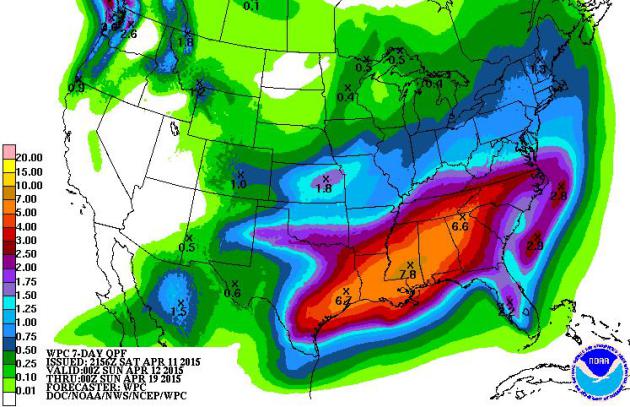
A Southern Soaking. NOAA models print out as much as 6-8″ of rain from a series of storms forecast to sweep across the Deep South and Gulf Coast in the coming week, capable of flash flooding. While drought intensifies from Minneosta to California.
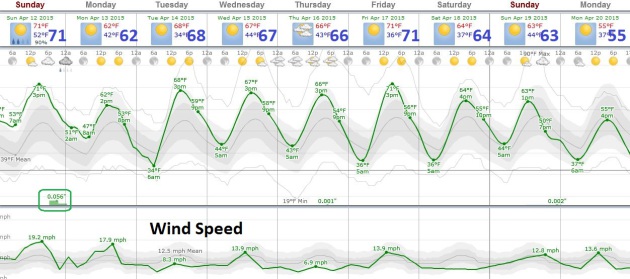
One Good-Looking Week. Although a 3-day rain storm dumping 3-4″ of rain would look pretty good right about now. Gusty winds transport the mercury into the 70s today before a few showers and T-showers sprout by late afternoon or evening – nothing severe expected. We dry out tomorrow, a streak of 60s into next weekend. We’re due for a break, but I’d like to see more rain in the forecast. Source: Weatherspark.
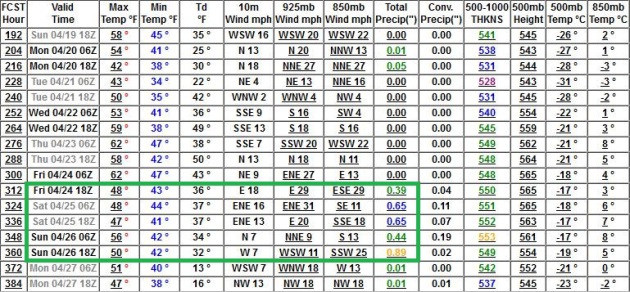
Out On A Limb. Although a dry bias is likely this week and much of next week long-range GFS guidance prints out nearly 2″ of rain from a slow-moving storm April 24-26. Circle your calendar, light a candle and hope for the best. Source: NOAA.
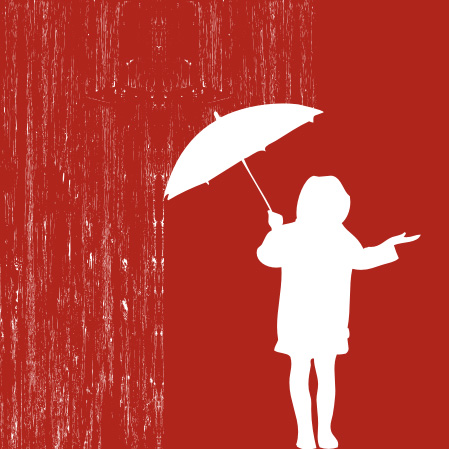
Turning The Corner on Moisture? I sure hope so; we seem to be sliding into a wetter pattern, but whether this is a trend or a fluke – it’s still too early to say. Here’s an excerpt from Mark Seely at Minnesota WeatherTalk: “Some Minnesota observers across the southern third of the state have reported measurable rainfall every day since last Saturday, by far the wettest period of the year so far. Over April 4-10 many climate stations reported over half an inch of rainfall, while far northern and southeastern locations received 1 to 3 inches of snowfall. Hail was reported from Freeborn, Martin, and Rock Counties. The weekly precipitation totals were significant for many southeastern Minnesota cities with Grand Meadow reporting 3.14 inches, Minnesota City reporting 3.16 inches, and La Crescent reporting 3.36 inches…”
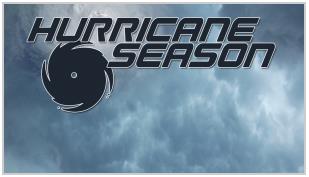
Quiet Hurricane Season Means You Should Still Prepare. All it takes is one. Here’s some timely and useful information from disastersafety.org: “..While this is good news, the Insurance Institute for Business & Home Safety (IBHS) reminds residents it only takes one storm to devastate a community, a state or an entire region. History has shown us that devastating hurricanes can still happen in below-average seasons. Hurricane Andrew, which is the second most damaging hurricane in U.S. history, was the first storm in 1992, and the rest of the season was relatively quiet. Therefore, IBHS encourages residents to be prepared, and start their hurricane home protection efforts now before the start of the season on June 1…”
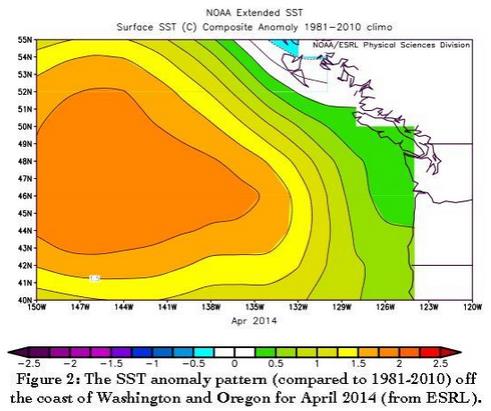
California’s Drought And The Weird, Warm “Blob” In The Pacific That May Be Fueling It. What, on Earth, is triggering the ridiculously resilient ridge over the west coast of the USA, with subsequent mega-drought and record heat? Here’s an excerpt from The Washington Post: “…It’s not clear what’s causing the warming of the water in the Tropics (and the resulting weather weirdness). The “North Pacific Mode” phenomenon has been recorded before, though it’s been getting stronger since the 1980s and this occurrence is more persistent and more extreme than what’s been seen in the past, Hartmann said. It could be just another natural variation in ocean and atmosphere temperatures, similar to the El Nino-La Nina cycle. Or, if it persists and becomes stronger, it could signal a more fundamental shift…”
Image credit above: “This figure shows the anomaly in surface tempratures off the coast of Washington and Oregon in April 2014. The green sections are less than 1 degree Celsius warmer than the 1981-2010 averages, while the orange sections are 1.5 degrees or more above average.” (NOAA).
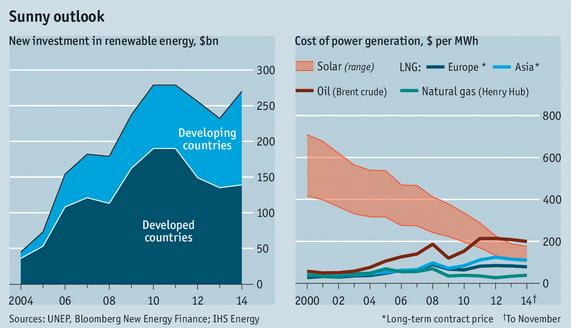
Renewable Energy: Not a Toy. The Economist takes a look at the economic forces (and very real ROI’s) driving the acceleration of clean, renewable energy; here’s an excerpt: “Global investment in renewable energy, chiefly wind and solar power, rose by a sixth in 2014, to $270 billion. This was partly because of subsidies in the rich world, such as America’s 30% federal tax credit for solar projects. Under a system known as “net metering”, consumers with small solar installations can sell surplus power to the grid at the same price as they pay for power flowing in. But even if the tax credit is cut, as expected, solar electricity could displace 9.7% of American retail electricity sales by 2019, reckons Bernstein, a research firm—over 30 times the share today...” (Graphic: The Economist).
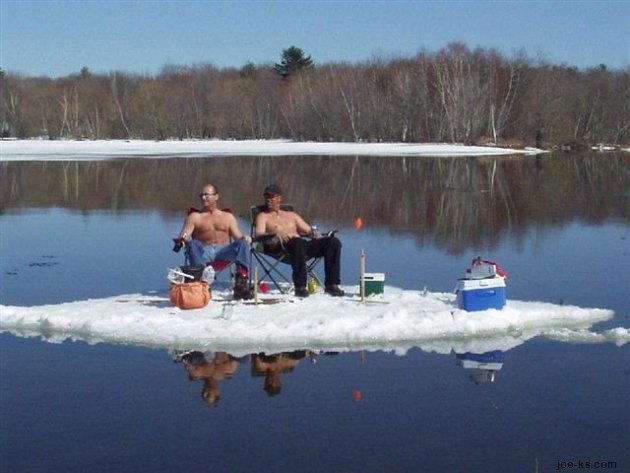
Redneck Ice Fishing. Please don’t try this at home.
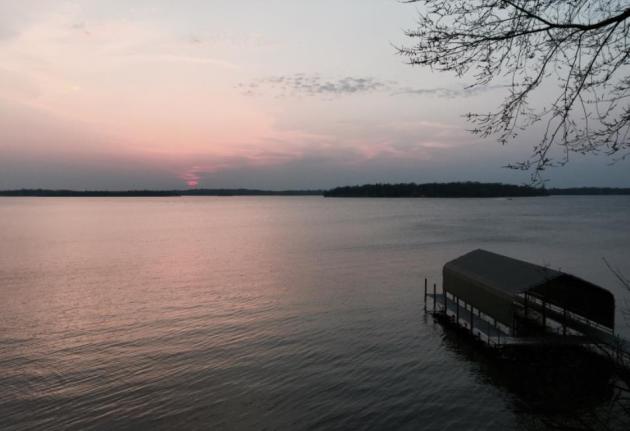
TODAY: Sun fades, windy. Late PM storms. Winds: S 25+ High: 71
SUNDAY NIGHT: Showers and T-showers. Low: 44
MONDAY: Increasingly sunny, still pleasant – a bit cooler. High: 63
TUESDAY: Lukewarm sun, a beautiful day. Wake-up: 41. High: 68
WEDNESDAY: Plenty of sun, mild breeze. Wake-up: 48. High: 67
THURSDAY: Mix of clouds and sun, still dry. Wake-up: 45. High: 65
FRIDAY: Clouds increase, showers far north. Wake-up: 47. High: near 70
SATURDAY: Sunny, nicer day of the weekend. Wake-up: 46. High: 68
Climate Stories….

Climate Change Seen Bringing More Fires, Less Snow to Yellowstone. Here’s an excerpt from a story at Reuters: “…Warming that is expected in the American West over the next few decades would transform lands in and around Yellowstone from a wetter, mostly forested Rocky Mountain ecosystem to a more open landscape akin to the arid U.S. Southwest, the researchers said in a special issue of a park report. Such dry condition have not been seen in the area for the past 10,000 years, said the report, “Ecological Implications of Climate Change on the Greater Yellowstone Ecosystem,” compiled by more than 20 university and government scientists...”
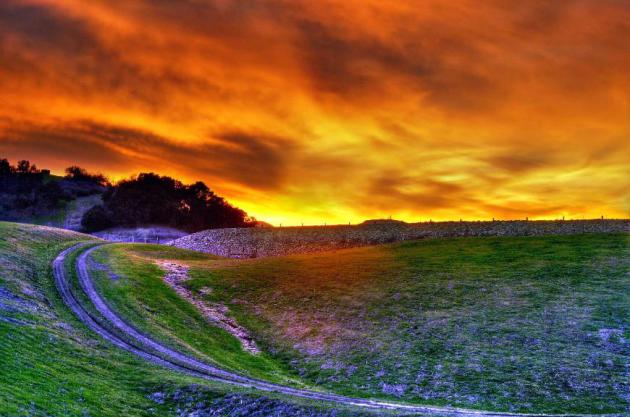
Faith Forum: Is Climate Change a Moral Issue? It’s a scientific reality and an economic challenge, but also a matter of stewardship and Creation Care for many of us. Here is an excerpt of an essay, one of many on display at The Reno Gazette-Journal: “…The moral issue for each of us is not that the climate is changing, but rather how do we relate to and handle the natural environment. Orthodox Christianity teaches that the way we relate to nature as God’s creation directly reflects the way we relate to God as Creator. And we believe that the sensitivity with which we handle the natural environment mirrors exactly the reverence we have for the divine. In other words, love for God, love for human beings and care for creation are all vitally interconnected. This is one reason that the Ecumenical Patriarchate, the highest spiritual authority in our Church, cares deeply for the environment and has a particular interest in climate change issues…
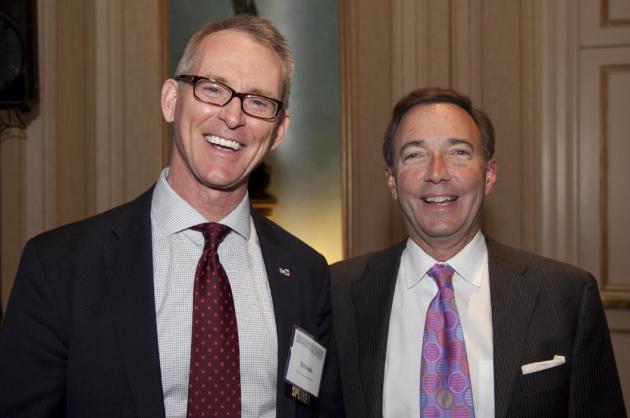
Are Conservatives Turning A Corner on Climate? Here’s an excerpt of an Op-Ed at The Charlotte Observer from a personal hero of mine, former South Carolina Congressman and Republican Bob Ingliss: “…They’ll need to believe that we could eliminate all subsidies for all fuels and attach all costs to all fuels. They’ll need to believe that citizens can drive innovation once marketplaces are made transparent and fossil fuels are held accountable for socializing soot. If they can complete that journey of faith, conservatives will enter the competition of ideas with an alternative to command and control regulation. If we fail to enter the competition and if the country decides to act on climate, we risk losing a tremendous opportunity for free enterprise.”


Paul, I ride my bike back and forth from Minnetonka to Minneapolis every day. It would really be useful if the forecast for the week displays the predicted weather direction/speed. I imagine there are all sorts of people who would appreciate more than just temp and precipitation. Can you tell me why wind speed/direction seems uniformly neglected by forecasters in long term forecasts? Thanks.
Hi Cory – I try to do this in the Star Tribune for the “tomorrow forecast”, both wind speed and wind direction. I think there’s always a concern about throwing too much information up on the screen (on TV). Data-overload. But online it makes a lot more sense. I’ll experiment with making wind speed info available going out 72 hours on my Star Tribune weather blog. Thanks for the note!